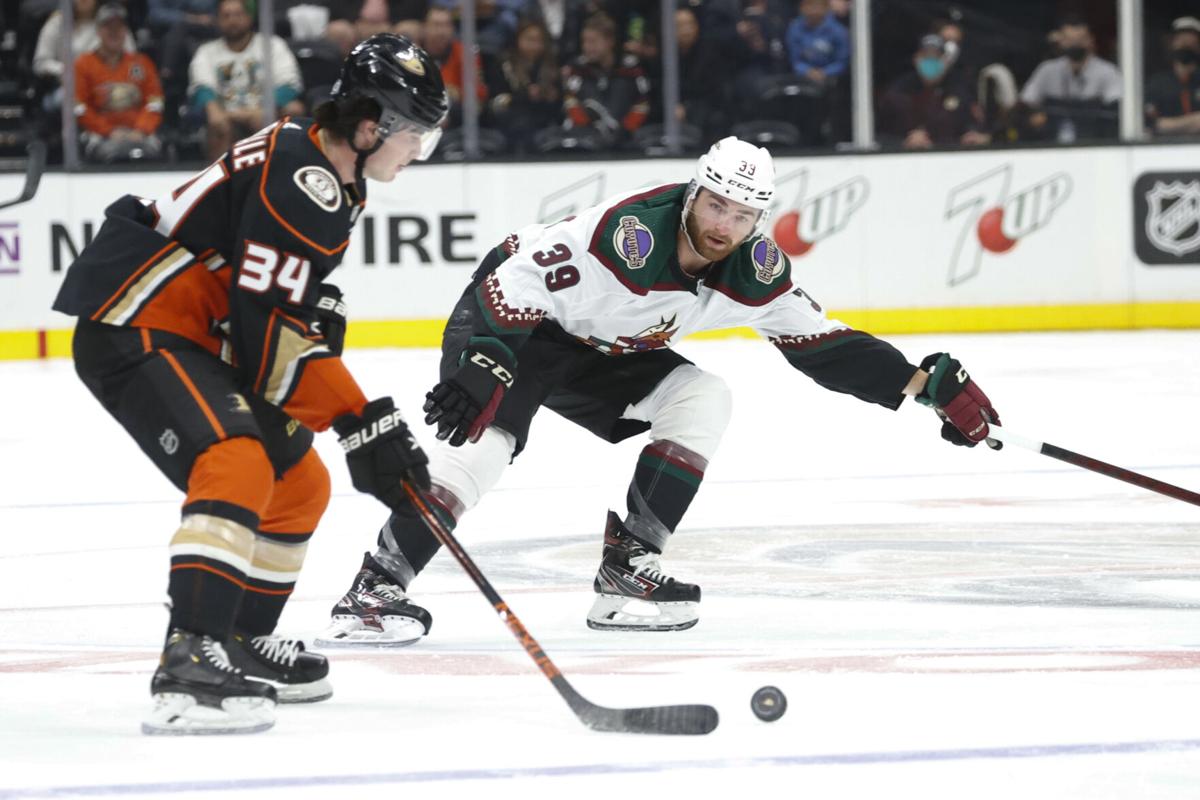It wasn’t all that long ago that Blake Speers was at the center of the hockey universe.
OK, so maybe just slightly off center.
Speers, a prospect with the NHL’s New Jersey Devils organization, was a secondary piece packaged alongside former NHL MVP Taylor Hall in the blockbuster deal of all deals of the 2019-20 NHL season. The December 2019 trade sent Hall and Speers west to the Arizona Coyotes, who were buyers at the time in their attempt to reach that season’s Stanley Cup playoffs.
Less than two years later, Hall is long gone from Arizona. The key piece the Coyotes gave up in the deal, former Tucson Roadrunners playmaker Nick Merkley, has moved on from New Jersey.
The 24-year-old Speers is still here, though, a member of the Roadrunners who’s fighting for a chance to return to the NHL someday. Tucson played its home opener Saturday night, a game that was still in progress when the Star went to press. The Roadrunners and Stars will play again Sunday at 4 p.m.
“I was happy to get a fresh start,” Speers said of the trade. “I was happy to have a couple of friends here that I was coming to play with, so that was exciting, and obviously it’s just the chance to revamp my career.”
The 5-foot-11, 185 pound forward has outlasted the other players in the megadeal. In weathering two pandemic-altered seasons and a devastating off-ice injury this past February, he’s also propelled himself into a leadership role on a young Tucson roster.
Tucson coach Jay Varady named Speers an alternate captain for this season prior to the Roadrunners’ opener last week in Stockton, California. Forward Hudson Fasching is the other alternate, and sixth-year Tucson defenseman Dysin Mayo was wearing the captain’s “C” last weekend before earning an NHL call-up.
“It’s a huge honor in pro hockey to be a leader and to be trusted upon from the organization,” Speers said of the “A” on his jersey. “Especially with our young guys, we have to kind of lead the way.
“I take it very seriously, and I’m going to do my very best.”
That Speers is on the ice at all speaks to his resilience. In February, Speers blew out his right Achilles tendon during an outdoor off-ice training session.
“We were running. I just felt a pop, or a release,” he said. “It just felt like I stepped my foot through the ground.
“It was pretty devastating.”
His return could portend good things for the Roadrunners. Tucson is 11-4 the last 15 times he has suited up. Likewise, they struggle without him. Tucson lost 14 of 16 games immediately following Speers’ injury, plummeting to the bottom of the AHL’s Pacific Division standings.
Speers said he tried to be a sounding board for younger players while he recovered.
“A big thing for me was just trying to provide value in any way that I can,” he said of his role after the injury. “Obviously when you’re out, I’m not going to get a chance to earn a job or show my work on the ice, so I kind of tried to provide a little more, whether it be leadership or positivity or hard work off the ice. …
“There were times last year when our team was going through some tough times. I took it upon myself a little bit to ease them — to be a guy that wants to try to watch games and give suggestions if I can.”
Speers said this week he feels like he’s at full strength. Roadrunners trainer Bill Nervig is optimistic, if a tad more cautious. Speers’ recovery will be an ongoing process, Nervig said, even though he has been cleared for game action.
Speaking generally, Nervig said a hockey player’s recovery from an Achilles injury might be faster than another athlete’s because of the type of movement necessary when performing.
“We’re fortunate with hockey players that they don’t do a lot of jumping,” Nervig said. “That’s one of the reasons why you see a hockey player come back faster than maybe a football player or basketball player. Because in skates on the ice, the calf muscle providing that vertical explosion isn’t quite as necessary, and because their using more of their glutes and thigh to drive the skating and less of the calf to propel them, like if you are sprinting or jumping.”
Speers said he used last season to “reflect on some things and to find holes in my game and things I can work on either physically or mentally.”
Speers acknowledges that if he wants another cup of coffee at the NHL level — he three NHL appearances for the Devils back in the 2016-17 season were a “sip,” he says — he’ll have to prove himself in ways that don’t necessarily show up in the box score.
“The goal for me is I just need to be a reliable 200-foot center. I’m going to go kill penalties and going to play against top lines. And it’s my goal to do a darn good job at it,” he said.
In terms of the injury, he’s taking a positive approach as he slides back into regular traction in Tucson’s lineup.
“Some things you can’t control in life, and that was one of them,” he said. “I had to look at in a positive way and in a way that was going to make me stronger.”





